The Skyscraper Museum is devoted to the study of high-rise building, past, present, and future. The Museum explores tall buildings as objects of design, products of technology, sites of construction, investments in real estate, and places of work and residence. This site will look better in a browser that supports web standards, but it is accessible to any browser or Internet device.
Preserving Shanghai: Modernizing Urban Identity
Preserving Shanghai:
Modernizing Urban Identity
Video by koko for www.kokobaz.com
NOVEMBER 24, 6:30 PM
The William and Anita Newman Vertical Campus, Baruch College
55 Lexington Avenue (at 24th Street): 14th Floor, Room 220
Preserving Shanghai
Modernizing Urban Identity
1.5 CEUs available
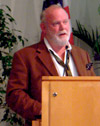 The Shanghai Skyline series concluded on November 24 with a program entitled "Preserving Shanghai: Modernizing Urban Identity." American architect Ben Wood opened his lecture with an evocative film he made the first day he visited the original li-long neighborhood, recording the daily domestic tasks of the residents. He recounted how he immediately responded to its strong sense of place and how he communicated his ideas to the Hong Kong developer Vincent Lo, securing the commission for the adaptive-reuse project that would become the famous Xintiandi, a term that means "New Heaven and Earth."
The Shanghai Skyline series concluded on November 24 with a program entitled "Preserving Shanghai: Modernizing Urban Identity." American architect Ben Wood opened his lecture with an evocative film he made the first day he visited the original li-long neighborhood, recording the daily domestic tasks of the residents. He recounted how he immediately responded to its strong sense of place and how he communicated his ideas to the Hong Kong developer Vincent Lo, securing the commission for the adaptive-reuse project that would become the famous Xintiandi, a term that means "New Heaven and Earth."
Wood then illustrated the de-construction of the traditional housing, a process that informed the design and re-construction of the site –adding new while recalling the nostalgic. "Modern bits" were added between the pre-existing, contemporary building totaling about 10% of the total project. Wood explained it would otherwise be "almost dishonest. Every generation needs to express themselves. If you don't, you didn't exist. If you just copy buildings, you won't be remembered. You're confused with the other generation that originally created them." Attracting more people than Disney World per day, Xintiandi has inspired copycat plans in cities across China.
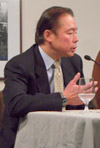 William Tung, the developer of the project known as RockBund in Waitanyuan south of the Suzhou creek, described his firm's adaptive reuse project. Like Xintiandi, RockBund transforms existing historical buildings into commercial and cultural centers. The "Origin of the Bund" was significant between the 1800s and the 1940s, as a unique cross-section of the arts and government and a socio-economic fusion of east and west. The creative output of this fusion inspired the 21st-century revitalization and design of RockBund in harmonizing the pre-war form and culture with the contemporary. Now a key tourist attraction, the Bund is a trademark of Shanghai, and government officials closely guard the city's identity.
William Tung, the developer of the project known as RockBund in Waitanyuan south of the Suzhou creek, described his firm's adaptive reuse project. Like Xintiandi, RockBund transforms existing historical buildings into commercial and cultural centers. The "Origin of the Bund" was significant between the 1800s and the 1940s, as a unique cross-section of the arts and government and a socio-economic fusion of east and west. The creative output of this fusion inspired the 21st-century revitalization and design of RockBund in harmonizing the pre-war form and culture with the contemporary. Now a key tourist attraction, the Bund is a trademark of Shanghai, and government officials closely guard the city's identity.
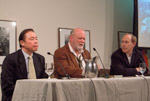 Both William Tung and Ben Wood then engaged in discussion with Cliff Pearson, deputy editor of Architectural Record. Pearson raised the issue of historic preservation and the constant tensions between the private and public sectors. The absence of a non-profit sector and advocacy groups, such as the Landmarks Conservancy in New York, was noted as a key problem.
Both William Tung and Ben Wood then engaged in discussion with Cliff Pearson, deputy editor of Architectural Record. Pearson raised the issue of historic preservation and the constant tensions between the private and public sectors. The absence of a non-profit sector and advocacy groups, such as the Landmarks Conservancy in New York, was noted as a key problem.
The wholesale demolition of Shanghai's traditional low-rise lane housing has slowed, if not ceased, and a debate has emerged over preservation versus adaptive reuse. The catalyst for the latter was the phenomenally successful Xintiandi, the design of Ben Wood and the enlightened Hong Kong developer Vincent Lo, which reconfigured several blocks of shikumen housing into an urbane complex of shops, restaurants, entertainment, and modern offices.
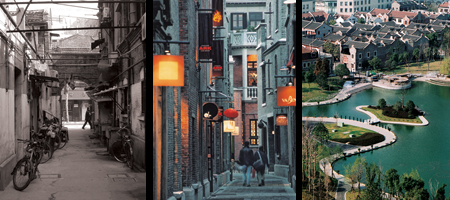
From Left to Right: Lane Housing before; Xintiandi after; Taipingqiao Lake and Xintiandi
courtesy Studio Shanghai
| Shanghai's major example of preservation and reuse is the Bund, the famous waterfront skyline of the imposing banks and financial institutions of the concessions period. Most have been restored to business use after decades of decline, but others have been transformed into multi-story retail, restaurants, and clubs, creating a unique up-scale mixed-use district. The key to this redevelopment planned by the city is Waitanyuan or 'Origin of the Bund', a historic area of handsome institutional structures dating from 1900-1933 centered around the former British Consulate grounds. Leading this effort, known as Rockbund, is William Tung of the New York-based Rockefeller Group International, who will report on the project. | 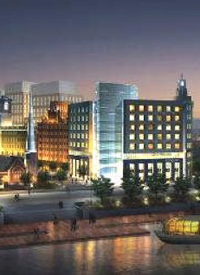 Rockbund Rendering courtesy Rockefeller Group International |
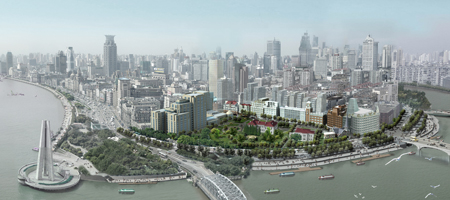
Rockbund Aerial Rendering, showing the Bund
courtesy Rockefeller Group International


